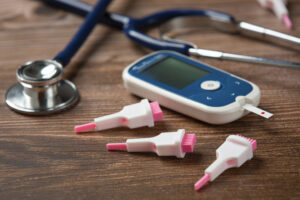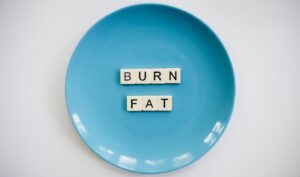How to Get Fat-Adapted
In the modern day, nearly all adults are glucose-adapted, but not fat-adapted. This scenario is a function of the relatively high carbohydrate intake that is typical in the Standard American Diet.
All carbohydrates  break down into glucose, the most common sugar. When glucose is readily available, it is preferentially metabolized, as it would make no sense for the body to utilize fat as a fuel. Not only is it important to save fat stores for potential periods of starvation, but also burning glucose is critical for the body to regulate glucose levels and avoid the hazards of high glucose levels, as in diabetes.
break down into glucose, the most common sugar. When glucose is readily available, it is preferentially metabolized, as it would make no sense for the body to utilize fat as a fuel. Not only is it important to save fat stores for potential periods of starvation, but also burning glucose is critical for the body to regulate glucose levels and avoid the hazards of high glucose levels, as in diabetes.
Thus, a continuous supply of carbohydrates will necessitate continuous utilization of carbohydrates as the primary energy source. That poses a problem for individuals who are interested in losing weight (e.g. burning fat).
Remove the carbs to get to the fat
In one respect, it’s relatively simple to get fat-adapted. The key is to reduce the availability of carbohydrates in the body such that a backup energy source becomes necessary. Reducing the supply of carbohydrates forces the body to find another fuel source, which it will do by accessing stored fat.
The strategy basically involves achieving this shortage of glucose by consuming less energy in the form of glucose than is metabolized. This shortage could be achieved in various time frames, depending on the intensity of effort on either side.
With about 2,400 calories present in the form of glycogen in the body, a strategy of simply avoiding any carbohydrate intake would take a little more than a day to burn off the available glucose without adding more to the system. Still, the body has to re-learn how to be efficient at utilizing fat as an energy source.
How long does it take to become fat adapted?
 If you are eating a very low carbohydrate diet, perhaps less than 50 grams of carbohydrates per day, it generally takes approximately four to five weeks in order to become fat-adapted. This process, of course, depends on the individual’s baseline health, basal metabolic rate (BMR), and metabolic status. Individuals with less insulin resistance can generally achieve a fat-adapted state much sooner than others who are worse off.
If you are eating a very low carbohydrate diet, perhaps less than 50 grams of carbohydrates per day, it generally takes approximately four to five weeks in order to become fat-adapted. This process, of course, depends on the individual’s baseline health, basal metabolic rate (BMR), and metabolic status. Individuals with less insulin resistance can generally achieve a fat-adapted state much sooner than others who are worse off.
Signs that you are fat adapted
#1 Decreased Hunger
Perhaps the best indicator of being fat-adapted is that you are capable of skipping meals without significant hunger. Sugar-burners tend to get uncomfortably hungry (aka hangry) between meals. When fat is burned, the resulting fatty acids can be converted to ketones which are natural appetite suppressants.
#2 Decreased Cravings
Cravings for sugar/carbs also decrease significantly when fat-adapted. When first starting this approach, however, many people will experience carb-cravings. Once fat-adapted, however, these cravings diminish significantly.
#3 Stable Energy Levels
Energy levels tend to be more consistent when fat-adapted, rather than fluctuating throughout the day. Sugar gives you quick, short-lasting energy – good for short bouts of high-intensity effort. Fat gives you steady, long-lasting energy – good for mild-to-moderate intensity for long periods.
#4 Mental Clarity
Many people experience a sense of mental clarity when they become fat-adapted. This phenomenon is likely because fatty acids and ketones appear to actually be the preferred energy source for the brain, rather than glucose.
#5 Weight Loss
Weight loss often accompanies the fat-adapted state, as the body is more efficient at burning fat, in combination with the other factors above. Though initial weight loss from carbohydrate restriction tends to be predominantly water weight, a sustained pattern of weight loss comes with true fat adaptation.
An important adaptation for humans
Ultimately, it’s important to become fat adapted, because it is necessary in order to achieve “metabolic flexibility”, whereby your body can utilize whatever energy source is available in the moment. It is an incredibly convenient tool for humans, as it allows one to sustain oneself when a proper meal might not be readily available. Once fat-adapted, your body retains a much higher functional state while running on the efficient energy of fat than if it were to experience withdrawal from a typical glucose-burning state.





